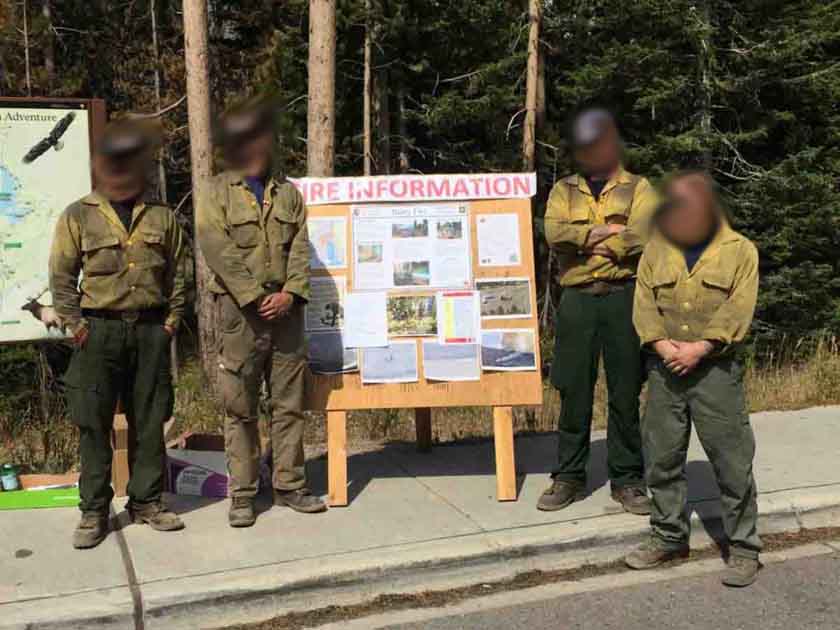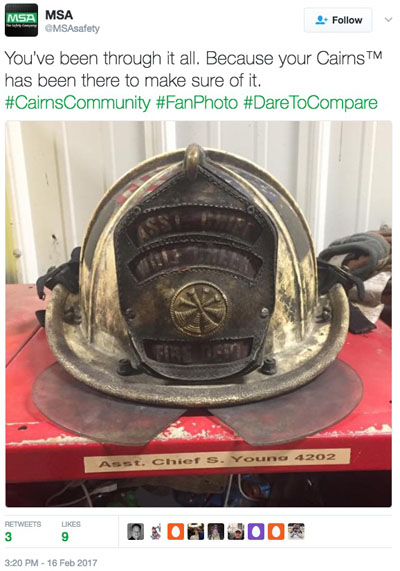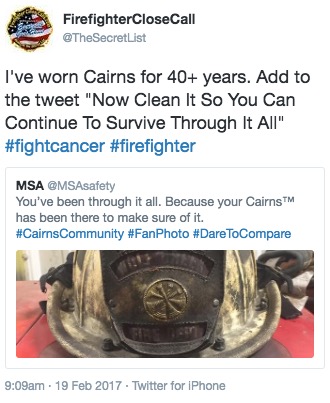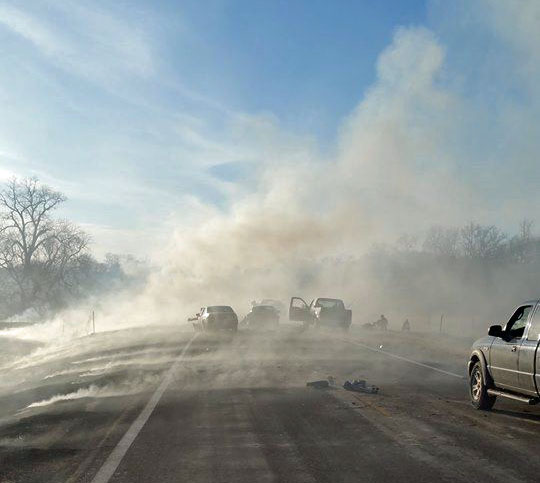Above: Members of a hotshot crew work in smoke on the Cold Brook Prescribed Fire, October 23, 2014. Photo by Bill Gabbert.
Very slow progress is being made toward recognizing the long term health risks of firefighters and more importantly, taking action to mitigate the effects.
This month another bill was introduced that would establish a national cancer registry for firefighters diagnosed with cancer, an occupational hazard that many organizations recognize as a presumptive disease in the profession. The bill is titled Firefighter Cancer Registry Act of 2017. A similar bill with 118 co-sponsors died a quick death in 2016, so there is little hope that this one will fare much better. This newest one has 12 co-sponsors as of today.
On Friday the Washington Post published an in-depth look at the topic in an article titled, Firefighters and cancer: Is a risky job even riskier? The authors interviewed several firefighters who have been diagnosed with cancer and laid out some of the health-related risks of the job.
Here is an excerpt from the article:
In 2015, the Centers for Disease Control and Prevention released the final results of what is currently the largest study of cancer risk among career firefighters ever conducted in the United States. The study of about 30,000 firefighters over a 60-year span showed that compared with the general population, firefighters on average are at higher risk for certain kinds of cancer — mainly oral, digestive, respiratory, genital and urinary cancers.
It is important to provide treatment to firefighters that have been injured on the job, including those suffering from diseases that were likely caused by working in a hazardous environment.
It is also important to take steps to reduce the hazard in the first place. For wildland firefighters who don’t have the luxury of breathing air carried in a bottle on their back, avoiding cancer-causing smoke can be difficult. But in some cases supervisors can minimize the number of firefighters that are forced to work in heavy smoke, or rotate them into areas where there is less. A crew can have a small carbon monoxide detector to identify excessive exposure to the dangerous gas, which on a fire would also be associated with the presence of particulates and carcinogens.
Here is another quote from the Washington Post article:
“Smoke on your gear and smoke on your helmet used to be a sign that you’re an experienced firefighter,” said Lt. Sarah Marchegiani of the Arlington County Fire Department. “But now people just recognize it’s a hazard and not worth it.”

An issue that always creates some controversy on Wildfire Today is the fact that some firefighters feel that refusing to change out of very dirty Nomex even when clean clothes or a laundry service are available proves to their colleagues that they are cool, or experienced, or skilled, or manly. The fact is, the contaminants that accumulate on clothing, personal protective equipment, and line gear are dangerous. Having it in contact with your skin can cause it to be absorbed into the body. If the firefighter’s environment is warm their pores will open which allows chemicals to be absorbed even more quickly. Everybody that is knowledgeable about the issue agrees. Contaminants can even build up to the point where the fire resistance of the fabric is compromised, especially if it includes chainsaw oil or the residue of drip torch fuel.
Firefighter Close Calls reports on injuries and accidents in the fire world and has written about the hazards of contaminated fire gear. Here is an example from earlier this week:
And below is a better photo of the helmet:

The fact that a major manufacturer of personal protective equipment for firefighters uses gear in their advertising that is probably contaminated with carcinogens, is an indicator of the difficulty in solving this health-related problem.

Information about the hazards of wood smoke:












